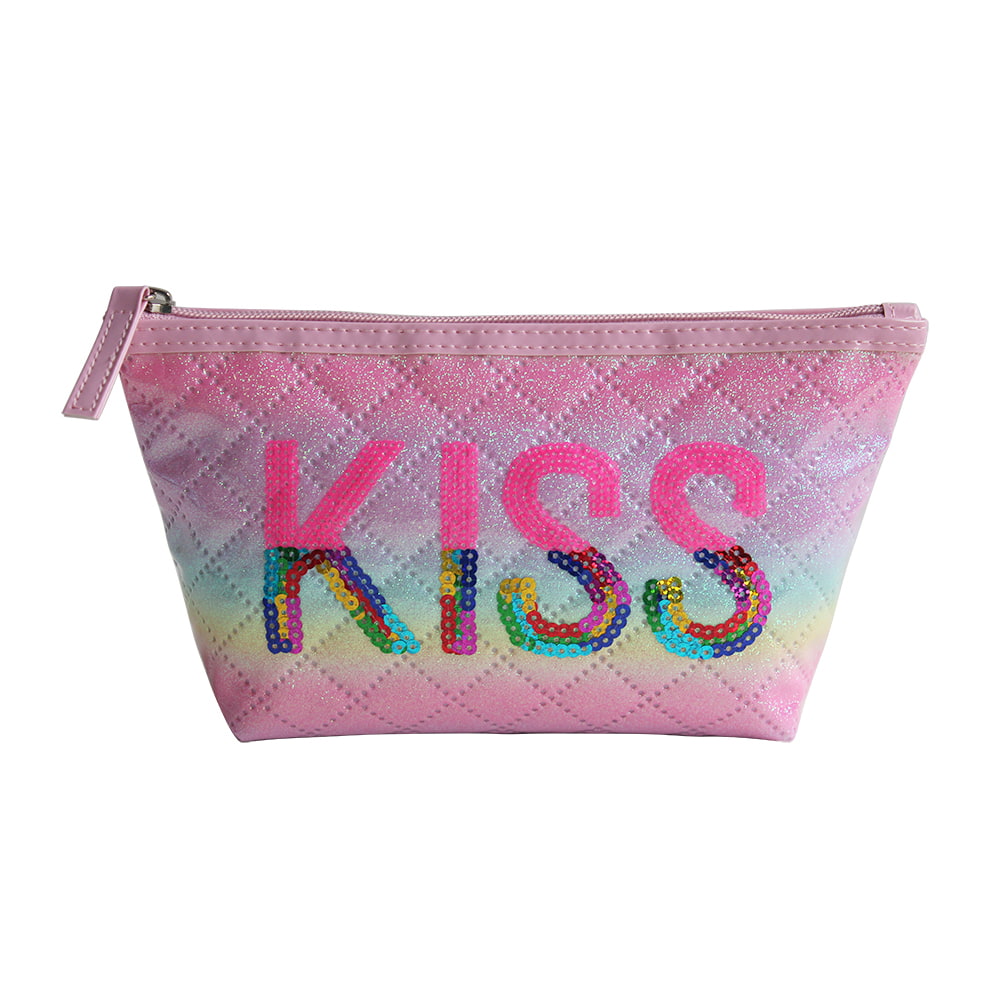Cosmetic bags, especially custom ones, have become an essential part of modern beauty routines. They serve as practical storage solutions for makeup products, skincare items, and other personal care essentials. However, their evolution goes beyond mere functionality. From simple pouches to stylish and personalized accessories, custom cosmetic bags reflect changes in fashion, consumer preferences, and the beauty industry itself.

Cosmetic bags have existed in some form for centuries, though they weren't always as specialized as those we use today. The earliest versions of cosmetic bags were simple cases or pouches used by women to carry personal grooming items. These early "bags" were often made from fabric or leather, designed primarily for practicality rather than fashion.
Pre-20th Century: In the past, women carried their cosmetics in small, handmade cloth pouches. These rudimentary pouches were typically crafted from cotton, silk, or velvet and often used to store a few essential items like combs, powders, and small mirrors.
1900s: As the beauty industry began to grow in the early 20th century, so did the demand for better organization and more aesthetically pleasing storage solutions. Cosmetic bags evolved into more structured cases, often with compartments for different items. The advent of mass manufacturing allowed for these bags to be produced more efficiently and sold to a larger market.
While their primary role was functional, early cosmetic bags were often crafted with attention to detail, as they were meant to showcase the owner's taste and social status.
In the mid-20th century, as women's roles and personal grooming habits evolved, cosmetic bags became more than just practical items; they became personalized fashion statements. This shift was largely influenced by the rise of consumerism and mass production, which made customized products more accessible.
Personalized Touches: By the 1950s and 1960s, the trend of customization began to take root. Cosmetic bags became popular as gifts, often featuring initials, monograms, or embroidery. These customizations were typically done by hand, making each bag unique and adding a personal touch. Brands began to recognize the growing demand for individualized products, which led to the introduction of options for customizing cosmetic bags.
Materials and Styles: During this time, cosmetic bags were made from a wider variety of materials, including leather, plastic, and vinyl. Many bags featured internal compartments, making them more functional for storing a range of products. The use of zippers, clasps, and handles also made cosmetic bags more convenient to carry.
Customization in the mid-20th century was driven largely by the growing influence of luxury brands, which sought to cater to consumers looking for exclusive, personalized items. Customization allowed brands to offer products that appealed to consumers' desires for uniqueness and individuality.
In the 21st century, the customization of cosmetic bags has reached new heights. With advancements in technology and a heightened focus on personal expression, consumers now have nearly limitless options for customizing their cosmetic bags to match their unique tastes and preferences.
Personalization Options: Today, it's easier than ever to create a custom cosmetic bag. With online tools, consumers can choose from various sizes, fabrics, colors, and designs, adding their names, logos, or artwork. Companies also offer the option to print photos, monograms, or special messages, making these bags highly personalized.
Sustainability Trends: As eco-consciousness grows, many consumers are opting for custom cosmetic bags made from sustainable materials. Recycled fabrics, organic cotton, and biodegradable alternatives have become more popular, reflecting a shift towards sustainability in the beauty industry. Custom bags made from eco-friendly materials cater to consumers who want both functionality and environmental responsibility.
Durable and Functional Designs: Modern cosmetic bags are designed to be both stylish and practical. They come with multiple compartments, waterproof linings, and secure zippers, making them good for traveling or everyday use. Many bags also feature removable pouches for easier access to items, and some even include built-in mirrors or additional features to enhance convenience.
The company covers an area of 1500 square meters and specializes in producing various types of makeup bags, jewelry bags, children's bags, and wash bags, with a monthly output of about 100000 bags.
 We Are Here
We Are HereAddress: 6th Floor, No. 2 Gantang West Road, Huanglinshan Industrial Zone, Yiting Town, Yiwu City, Jinhua City, Zhejiang Province, China
 Contact Us
Contact UsPhone: +86-13857970558

sales1@xibodan.com
sales2@xibodan.com
sales6@xibodan.com
If you have any requirements, please click on "contact" to leave a message.

 English
English русский
русский Español
Español